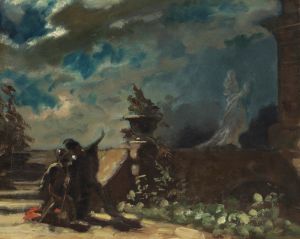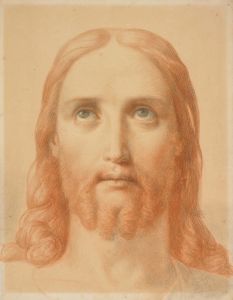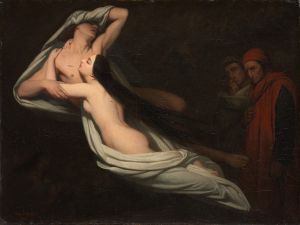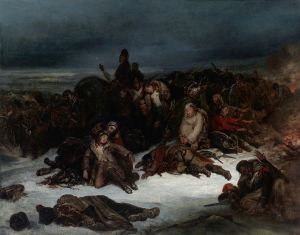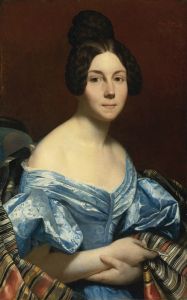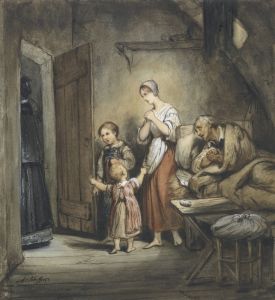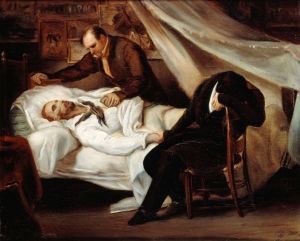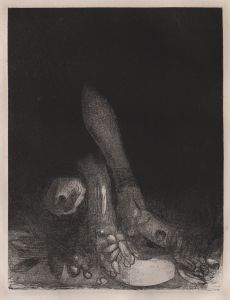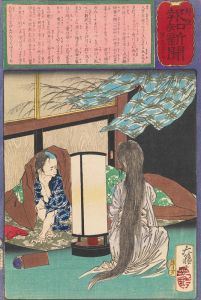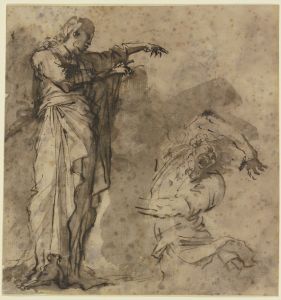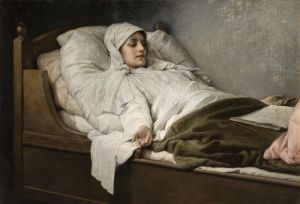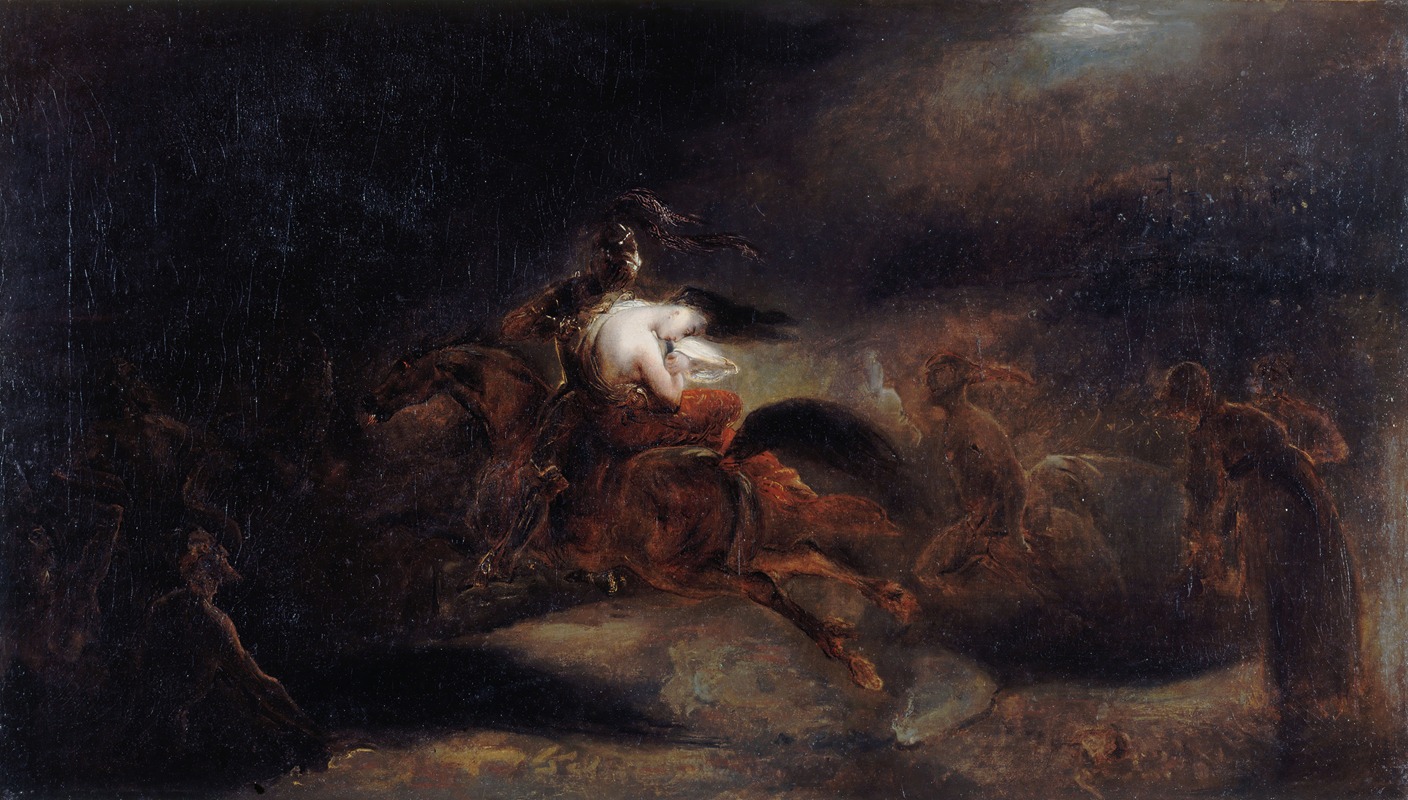
Lenore, The Dead Go Fast
A hand-painted replica of Ary Scheffer’s masterpiece Lenore, The Dead Go Fast, meticulously crafted by professional artists to capture the true essence of the original. Each piece is created with museum-quality canvas and rare mineral pigments, carefully painted by experienced artists with delicate brushstrokes and rich, layered colors to perfectly recreate the texture of the original artwork. Unlike machine-printed reproductions, this hand-painted version brings the painting to life, infused with the artist’s emotions and skill in every stroke. Whether for personal collection or home decoration, it instantly elevates the artistic atmosphere of any space.
Ary Scheffer's painting Lenore, The Dead Go Fast is a notable work inspired by the German Romantic ballad "Lenore," written by Gottfried August Bürger in 1773. The ballad tells the story of Lenore, a young woman who laments the absence of her lover, Wilhelm, after he fails to return from war. In the poem, Lenore's despair leads her to curse God, and she is subsequently visited by a spectral figure resembling Wilhelm. The figure takes her on a wild, supernatural ride that ultimately reveals itself as a journey to the grave, symbolizing her own death and punishment for her blasphemy.
Scheffer, a Dutch-French Romantic painter, created this work in 1831, capturing the dramatic and eerie essence of Bürger's narrative. The painting depicts Lenore and her ghostly lover on horseback, galloping at a breakneck pace through a dark and foreboding landscape. The spectral quality of the rider and the horse, combined with Lenore's expression of terror, conveys the supernatural and fatalistic themes of the story. Scheffer's use of chiaroscuro—contrasting light and shadow—enhances the painting's dramatic tension and evokes a sense of impending doom.
This painting reflects Scheffer's interest in literary and emotional themes, which were central to the Romantic movement. Scheffer often drew inspiration from literature, mythology, and history, and his works frequently explored themes of love, death, and the supernatural. Lenore, The Dead Go Fast is a prime example of his ability to translate literary narratives into visual art, capturing the emotional intensity and moral undertones of the source material.
The painting is housed in the Louvre Museum in Paris, where it remains an important example of 19th-century Romantic art. It is often studied in the context of Romanticism's fascination with the macabre and the exploration of human emotions in the face of mortality and the unknown.





